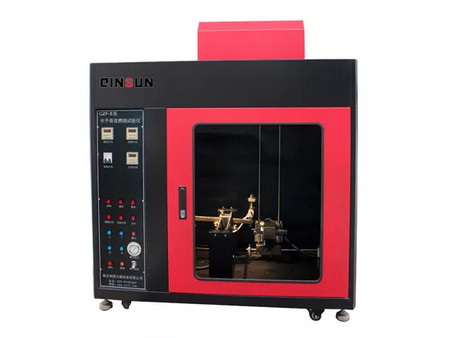UL 94 Horizontal Vertical Flame Tester is an instrument used to test the fire resistance of plastic materials. It tests how a plastic material reacts when a flame hits it, and whether the material is fire resistant. The instrument can test flames in both horizontal and vertical orientations, and can detect the reaction time of materials in the flame and the industry standard fire resistance rating.
The UL94 test method includes three tests: flame contact, burning time and self-extinguishing time:
1. Flame contact test:
This test method measures the degree of flammability of a material when exposed to a source of fire. This test is divided into two methods: horizontal burning test and vertical burning test. For the UL94 horizontal burning test, the test object is placed on an oblique angle, while in the UL94 vertical burning test, the sample is placed perpendicular to the ground. During the test, a flame is brought into contact with the material and then removed. Combustion performance is evaluated based on factors such as the duration of combustion and the flame or residue produced by the sample.
2. Burning time test:
This test method can measure the time for the material to burn, as well as information such as the droplets produced when the sample burns. In the test, the sample is blown by the air flow, and the spark is continuously ignited to observe whether there are drops, their shape, quantity, and burning time to evaluate the combustion performance of the material.
3. Self-extinguishing time test:
This test method measures a material's self-extinguishing time, which is the time it takes for a material to self-extinguish from a burning state. In the test, the samples were tested in two ways: indoor combustion and outdoor combustion. Indoor tests are usually performed by subjecting the sample to an automatically timed flame source, while outdoor tests are performed by natural combustion methods.
These three test methods make up the UL94 testing process for evaluating properties such as flammability of materials. Each rating is determined by specific characteristics such as burn time, flame extension length, and drop generation response time, and is assigned a specific UL94 classification based on the results of the tests.


评论
发表评论